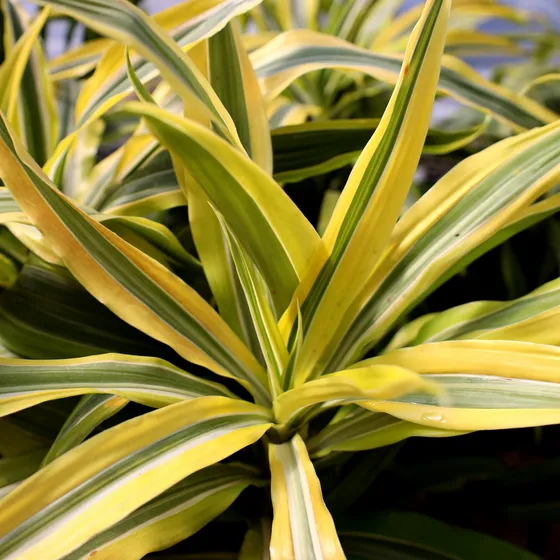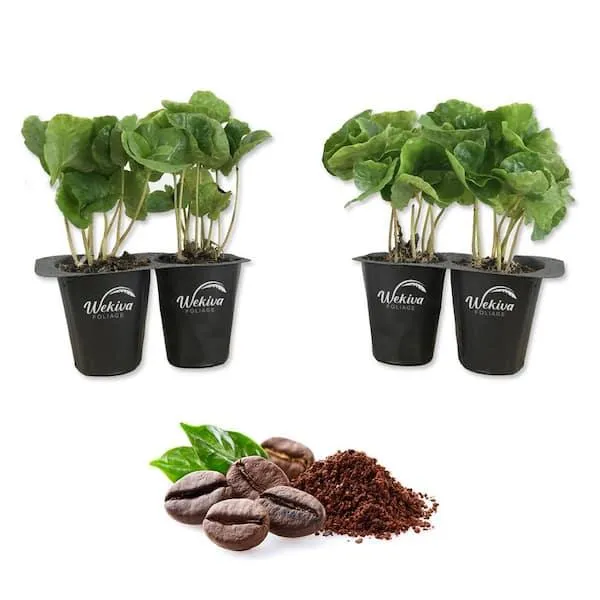Your Guide to Houseplants with Striped Leaves
So you came across a stunning houseplant with white and green striped leaves and now you’re wondering – what is this plant and how can I keep it looking its best? Well wonder no more, friend, because in this article I’ll tell you everything you need to know about caring for striped-leaf beauties.
Identifying Striped-Leaf Plants
The first step is plant identification. There are a few common houseplants sporting those groovy variegated leaves. Let’s run through the top contenders:
- Zebra plant (Haworthia attenuata): My go-to for low-light spots, with thin vertical stripes. Looks kinda alien, if you ask me!
- Peperomia: These guys come in different varieties like P. caperata ‘Stripes’ with horizontal bands. So neat!
- Chinese evergreen (Aglaonema): The classic red-trimmed edges on some varieties give a striped effect. Very classy.
- Polka dot plant (Hypoestes phyllostachya): As the name suggests, it’s covered in cute dots that blend together for an all-over stripy look.
Pay close attention to leaf shape and pattern direction to narrow it down. And don’t be afraid to ask for an ID at your local plant shop if you’re stumped.
Light and Water Needs
Now that you know what kind of striped stunner you’re dealing with, the next step is finding its perfect home. Most variegated plants require medium to bright indirect light to keep those patterns popping without sunburn. I made the mistake of putting my peperomia right in a south-facing window once – let’s just say it was not a good look.

As for water, these beauties tend to be a bit more delicate than their solid green cousins. Give them a drink when the top inch of soil is dry, and don’t leave them sitting in waterlogged soil. Underwatering is safer than overwatering when you’re still getting to know a plant. You can also propagate them from stems or leaves if you do happen to underwater or underwater occasionally as we all do. I propagated one peperomia this way that has now tripled in size!
Fertilizing and Pests
These tropical fans also appreciate some plant food throughout the growing season (spring to fall). Use a diluted liquid fertilizer every few weeks. Too much nitrogen can cause unattractive all-green new growth though, so go light on the feedings.
As for pests, mealybugs and spider mites can be problematic. Keep an eye out for any fuzzy white or webbed areas. Wipe leaves with alcohol or a soap/water solution if you spot infestations early. Preventatively, wipe leaves when watering for a protective barrier. Pests hate the taste of ethanol! That’s why I always keep a bottle of my homemade plant spray – basically rubbing alcohol, dish soap, and water – on hand.
Propagation and Dividing
If your stripe dream is thriving, at some point you may want to multiply your stash. Many of these beauties can be propagated from stem or leaf cuttings in water or soil. Just remove a 3-4 inch piece, remove the lower leaves, and plant. Keep the soil lightly moist until you see new growth. It’s pretty rewarding to grow “frankenplants” from clippings!

You can also divide overgrown root balls in spring or fall. Carefully tease roots and crowns apart and replant divisions with fresh potting mix. Within a few months, you’ll have several new plants to enjoy or share.
Admiring Your Stripes
With a bit of care tailored to their needs, striped plants can be absolute show-stoppers in your plant fam. Make sure to give them a spin every so often so you can appreciate all the funky patterns. I actually found a forgotten mini peperomia the other week that had grown a whole new stripe – it was amazing! These guys never cease to surprise.
So in summary: light but not sun, keep soil moist but not soaked, feed moderately, prevent pests, and propagate to your heart’s content. Follow these tips and your stripebabies will bring you loads of visual joy for years to come. Let me know if you have any other plant parenting questions! Happy growing.
Top Houseplants with Striped Foliage
| Plant | Light Needs | Water Needs | Sizes |
|---|---|---|---|
| Zebra Plant | Bright Indirect Light | Allow Soil to Dry Between Waterings | Reaches 2-3 Feet Tall and Wide |
| Chinese Evergreens | Medium Light | Let Soil Dry Slightly Between Waterings | Dwarf Varieties Stay Under 2 Feet |
| Striped Dracaena | Bright Indirect Light | Let Soil Dry Before Watering | Up to 5 Feet Tall |
| Peperomia | Medium to Bright Light | Let Soil Dry Before Watering | Most Varieties Under 2 Feet |
| Croton | Bright Indirect Light | Let Soil Partially Dry Before Watering | Most Varieties Up to 4 Feet Tall |
FAQ
-
What kinds of plants have striped leaves?
There are several varieties of plants that produce striped leaves. Some common examples include:

-
Why do some plant leaves have stripes?
Plant leaves develop stripes as a way to protect themselves from environmental threats. The stripes make it harder for insects and animals to spot the leaves. It’s kind of like camouflage!
-
Will striped leaves change colors through the seasons?
Sometimes the colors and patterns on striped leaves will alter based on the time of year. For example, the stripes might seem bolder or more vivid in summer compared to fall. Nature never stops amazing us!
-
How can I get my regular houseplant to grow striped leaves?
You can’t really make a non-striped plant produce striped foliage. The striped trait is genetic. Although, providing optimal care and the right growing conditions may help bring out more prominent stripes on some varieties.
-
Are striped leaves more difficult to care for?
In most cases, striped-leaved plants have similar care needs to their solid colored cousins. However, some do prefer slightly brighter light to really make the stripes pop. But is it worth it for that stunning visual effect? You be the judge!

-
Do stripes serve any purpose for the plant?
Scientists think the stripes may help deter insect pests by making the leaves harder to spot. Some even say stripes aid in photosynthesis. Nevertheless, the distinctive patterns are certainly pleasing to our eyes as well!
-
Why are new leaves on my striped plant solid colored?
It can be common for young immature leaves to lack stripes at first. Sometimes the markings only come in as the foliage fully develops and matures. So don’t lose hope – the stripes may yet appear!
-
How do striped plants compare to their solid leaf counterparts?
In terms of care requirements, there is often little difference. However, the striped varieties offer a much more eye-catching aesthetic. Their patterns can provide amazing focal points in your home’s decor. On the other hand, solid leaves have a charm of their own.
